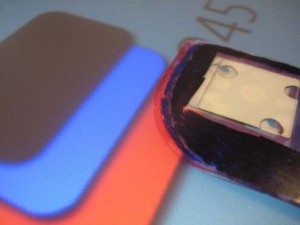 We present a method for identifying the order of stacked items on interactive surfaces. This is achieved using conventional, passive fiducial markers, which in addition to reflective regions, also incorporate structured areas of transparency. This allows particular orderings to appear as unique marker patterns. We discuss how such markers are encoded and fabricated, and include relevant mathematics. To motivate our approach, we comment on various scenarios where stacking could be especially useful. We conclude with details from our proof-of-concept implementation, built on Microsoft Surface.
We present a method for identifying the order of stacked items on interactive surfaces. This is achieved using conventional, passive fiducial markers, which in addition to reflective regions, also incorporate structured areas of transparency. This allows particular orderings to appear as unique marker patterns. We discuss how such markers are encoded and fabricated, and include relevant mathematics. To motivate our approach, we comment on various scenarios where stacking could be especially useful. We conclude with details from our proof-of-concept implementation, built on Microsoft Surface.
Stacking Markers
Quick Facts
Jan 2009Arising Publications
Tom Bartindale, Chris Harrison
ITS '09 Proceedings of the ACM International Conference on Interactive Tabletops and Surfaces, 2009
ITS '09 Proceedings of the ACM International Conference on Interactive Tabletops and Surfaces, 2009